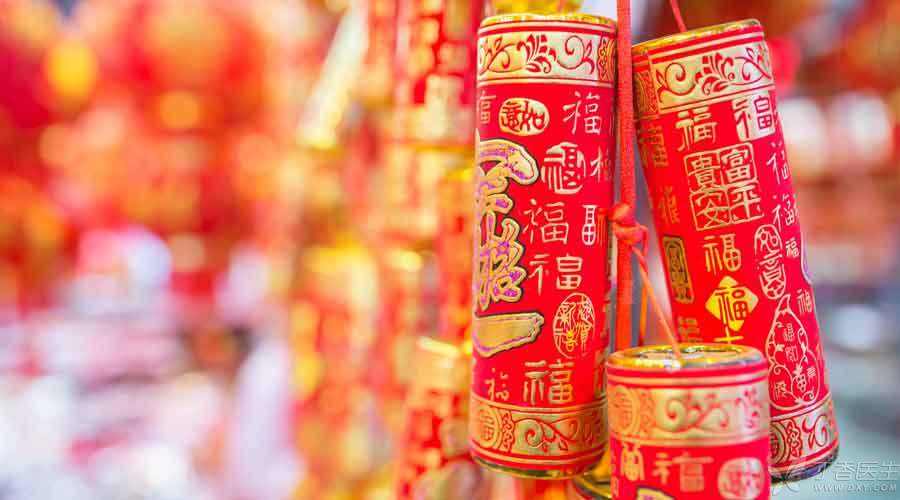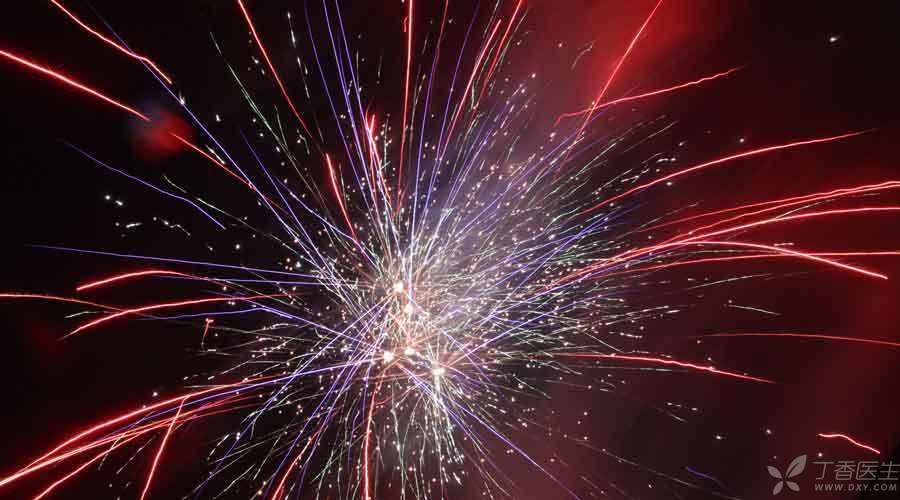
During the Spring Festival, it has been a tradition in our country for nearly a thousand years to say good-bye to the old and welcome the new. Although firecrackers can indeed add a lot of festive atmosphere, if you don’t pay attention and get injured, this festival will not be easy.
The best way to avoid injuries is not to set off firecrackers.
However, adults may be able to listen to this sentence, but children may not be able to understand it. After receiving the New Year’s money, I went straight to the firecracker stand. This was one of the necessary items for me to celebrate the Spring Festival every year when I was a child, and I was injured once or twice by firecrackers.
In view of the same lesson as blood when I was a child, I must give you a nagging about the correct posture of setting off firecrackers and the treatment method after being injured.
The correct posture of setting off firecrackers
If you have to play, then you must pay attention to the choice and setting off of firecrackers:
1. Don’t go to small stalls without formal license plates to buy firecrackers. Regular firecracker sales outlets all have corresponding licenses, and the safety factor of firecrackers is relatively higher.
2. Set off in an empty place. Do not set off in residential areas or places surrounded by inflammable and explosive substances;
3. Try not to hold firecrackers, only one at a time;
4. If the firecrackers don’t ring after they are lit, remember not to come forward to check them again. (When I was a child, the most serious scald was caused by this kind of death.)
Things can never be foolproof. If you are really careless and injured, you can use the following methods to deal with them. However, there are different ways to deal with different injuries, so you should look closely here.

What about being injured by firecrackers?
1. Treatment of Mild Burns
Mild burns mainly include first-degree burns and second-degree burns with a diameter of less than 7.6 cm.
- First degree burn: It is characterized by erythema and swelling of the skin, and burning pain on the burned part. Generally, blisters will not appear. Second degree burn: On the basis of first degree burn, blisters of different sizes will appear.
Treatment:
(1) Turn on the faucet and use fast-flowing cold tap water to cool the injured part for at least 10 minutes. During washing, pay attention to take off the jewelry worn;
(2) When the wound temperature drops, aseptic and dry cotton handkerchief or gauze can be used to cover the wound surface to prevent damaged blister infection.
(3) If the wound is larger than the size of an ordinary adult’s palm, you should go to the emergency department.
(4) If children or the elderly are injured, they should go to the emergency department regardless of the degree of burns and the size of any wound area.
2. Treatment of severe burns
Different from mild burns, severe burns are not as painful as mild burns because they damage nerves. At the same time, the color of some wounds may not be so ruddy or even scorched yellow [carbonization].
Treatment:
(1) As with mild burns, turn on the tap and rinse the injured area with cold water for at least 10 minutes. At the same time, you need to call 120 urgently or be ready to go to the emergency department of the hospital.
(2) If the injury area is large, in the process of cold water flushing, beware of too long flushing and hypothermia of the patient.
(3) Make the injured part in a comfortable posture.
(4) Remove the clothes and jewelry in the injured part and its vicinity. If the clothes and jewelry have adhered to the wound and cannot be removed, do not remove them.
(5) Prevent and deal with shock.
It should be noted that no matter what degree of burns, do not do things:
- Apply various ointments and folk remedies to the wound. Use adhesive dressings: such as Band-Aids; I broke the blister myself.
3. How to deal with fainting
Patients with severe burns are prone to shock due to a large amount of blood loss and water loss. Patients will show pale complexion, dripping cold sweat, looking very weak, and some even coma.
Therefore, in the process of waiting for rescue, we should do:
(1) Lay the injured limb flat or in a more comfortable position. If it is on the ground, cover the ground with a layer of clothing to isolate the cold on the ground. At the same time, occasionally move the lower limb to promote blood supply.
(2) If there is a fracture, you must be more careful not to move your limbs at will.
(3) Remove ties, scarves, waist and other items.
(4) Try not to let the injured eat.
4. How to deal with clothes on fire
Remember the most important words: stop, low and roll.
(1) Stop: Once the clothes catch fire, keep calm and stop all actions. If you run around in panic, the wind will only help the fire and make the clothes burn more and more brightly.
(2) Low: If you are standing at this time, you can lie on the ground at this time in case you roll on the ground next.
(3) Roll: Roll on the ground until all the flames are crushed out.
5. Treatment of eye injuries
If you hurt your eyes, please go to the hospital immediately. At the same time, we must not do the following things:
- Don’t rub your eyes, impurities from firecrackers may cause secondary damage to your eyes. Do not rinse your eyes, because chemicals in firecrackers may react with water. Do not use anything to press your eyes; Don’t tear off anything that has adhered to your eyes. Don’t take anticoagulant drugs, such as aspirin or ibuprofen.
Well, during the Spring Festival, we will not continue to talk here. Finally, I wish everyone a good time and a safe time!
